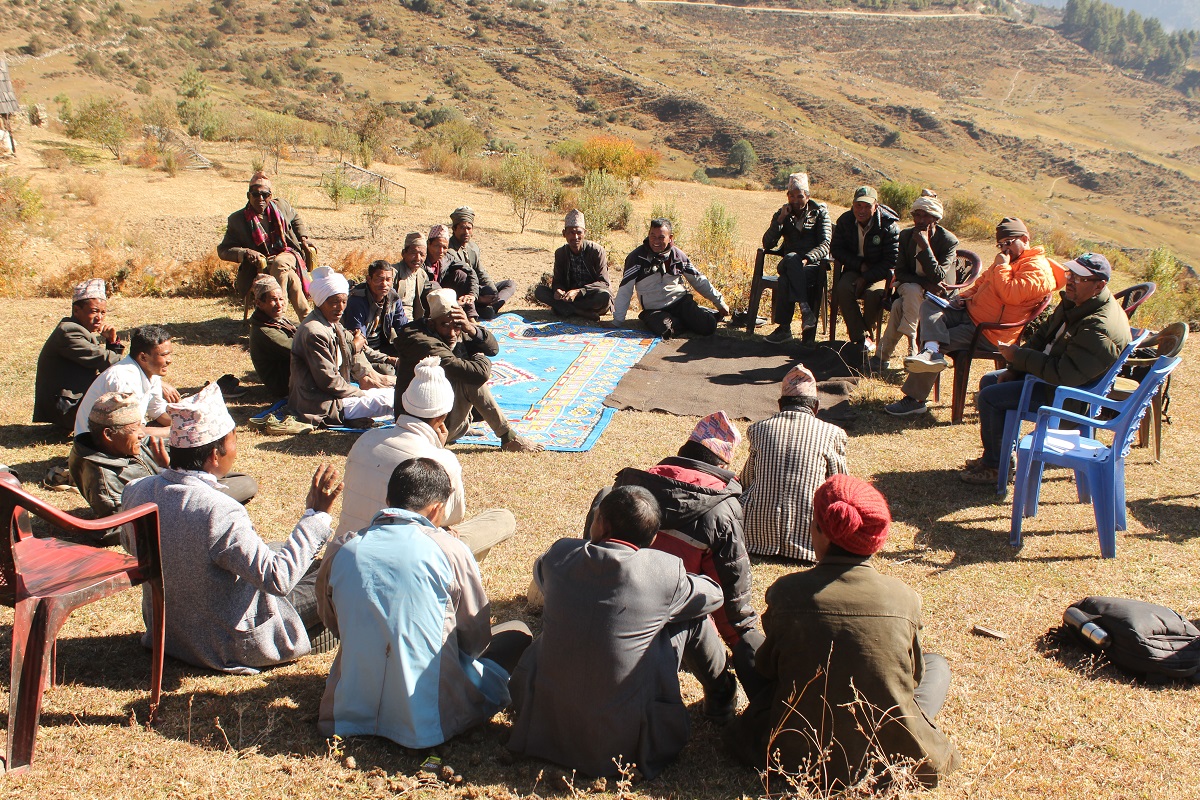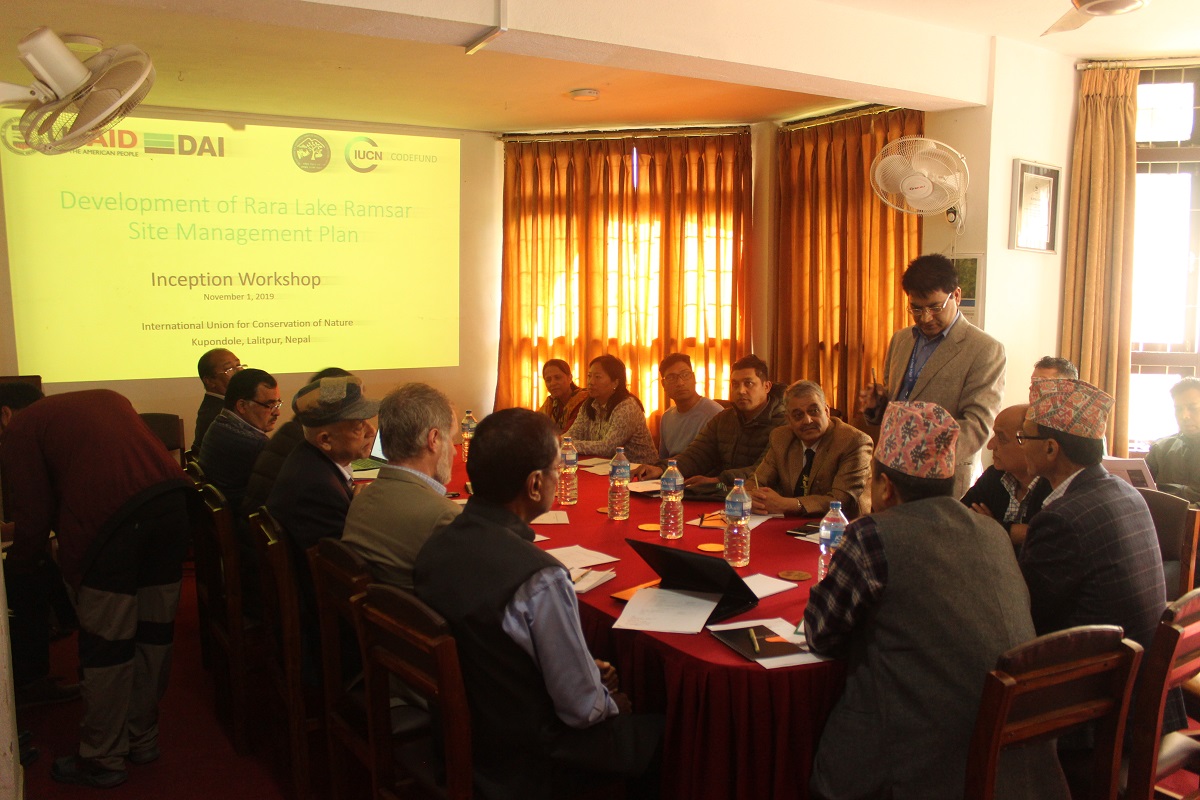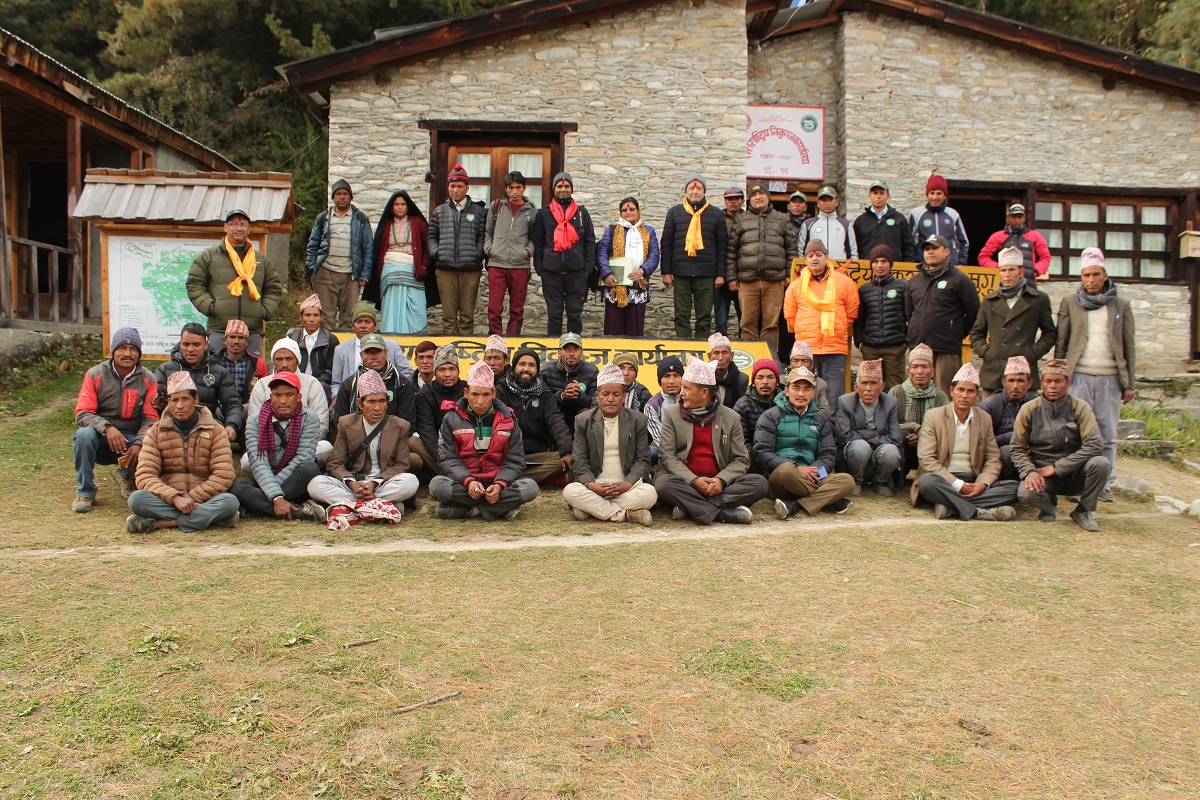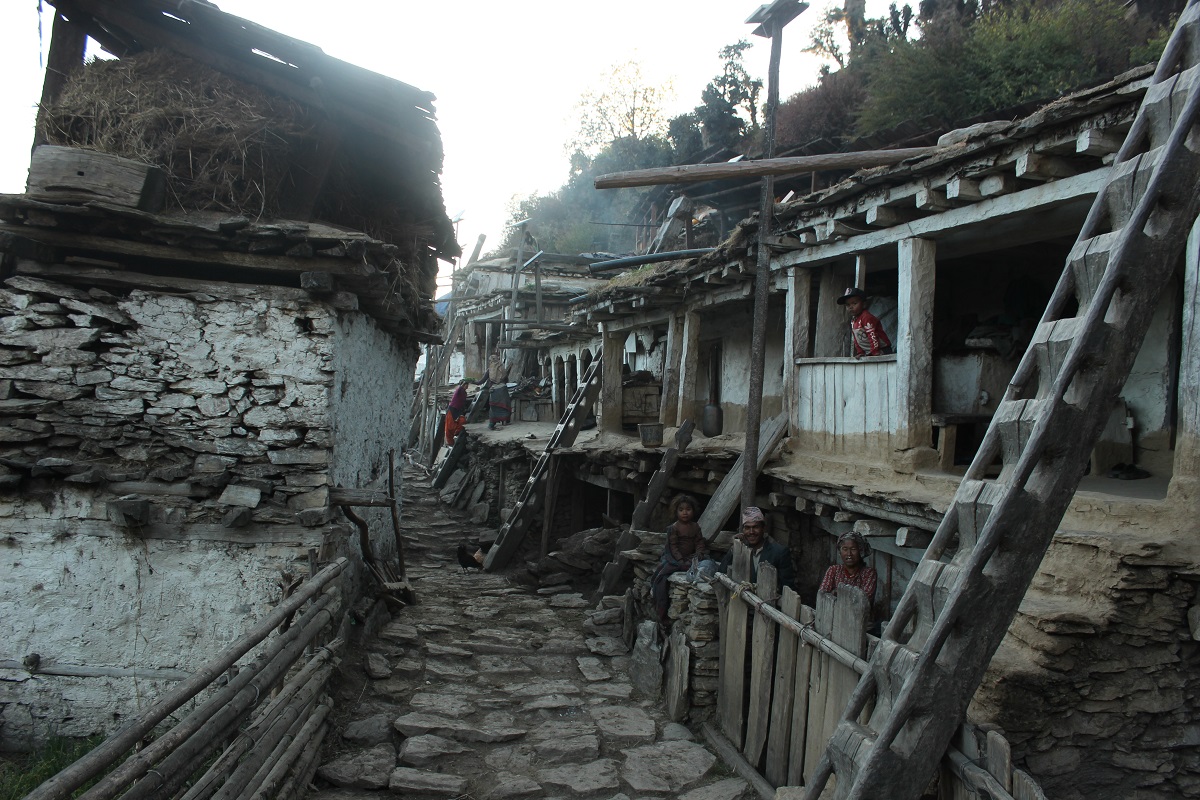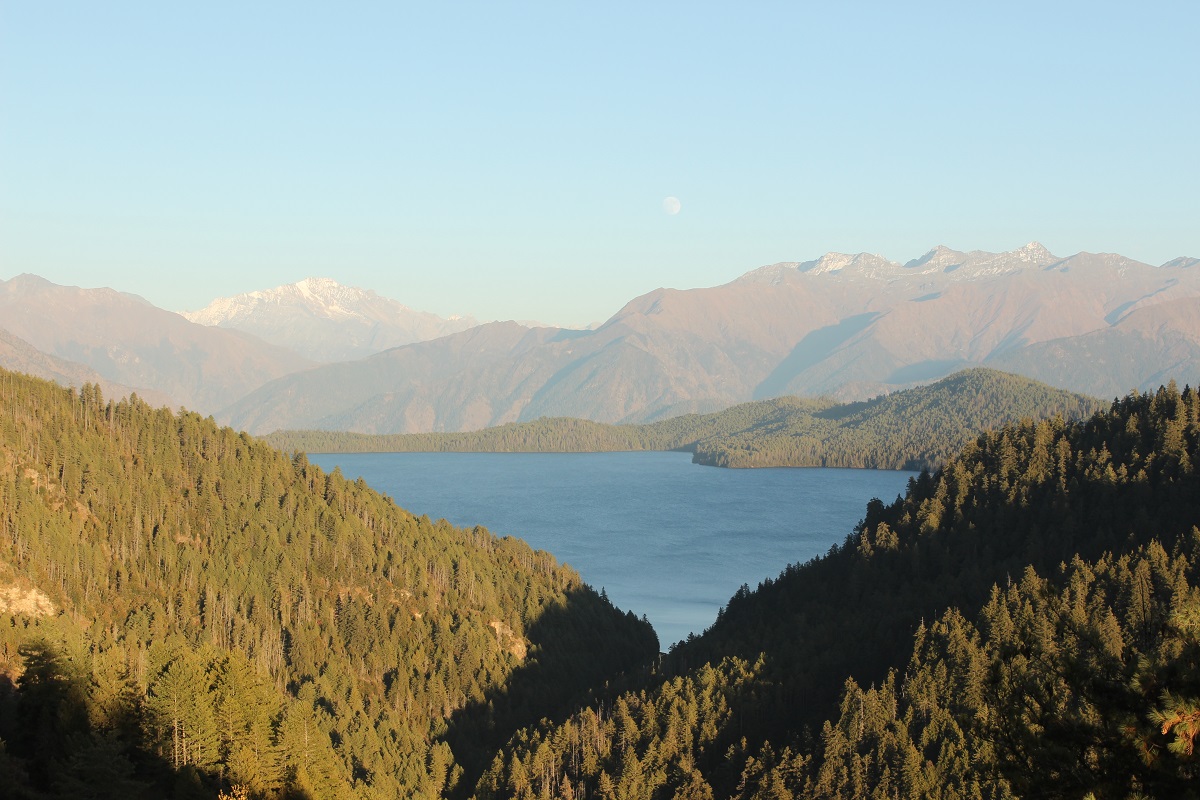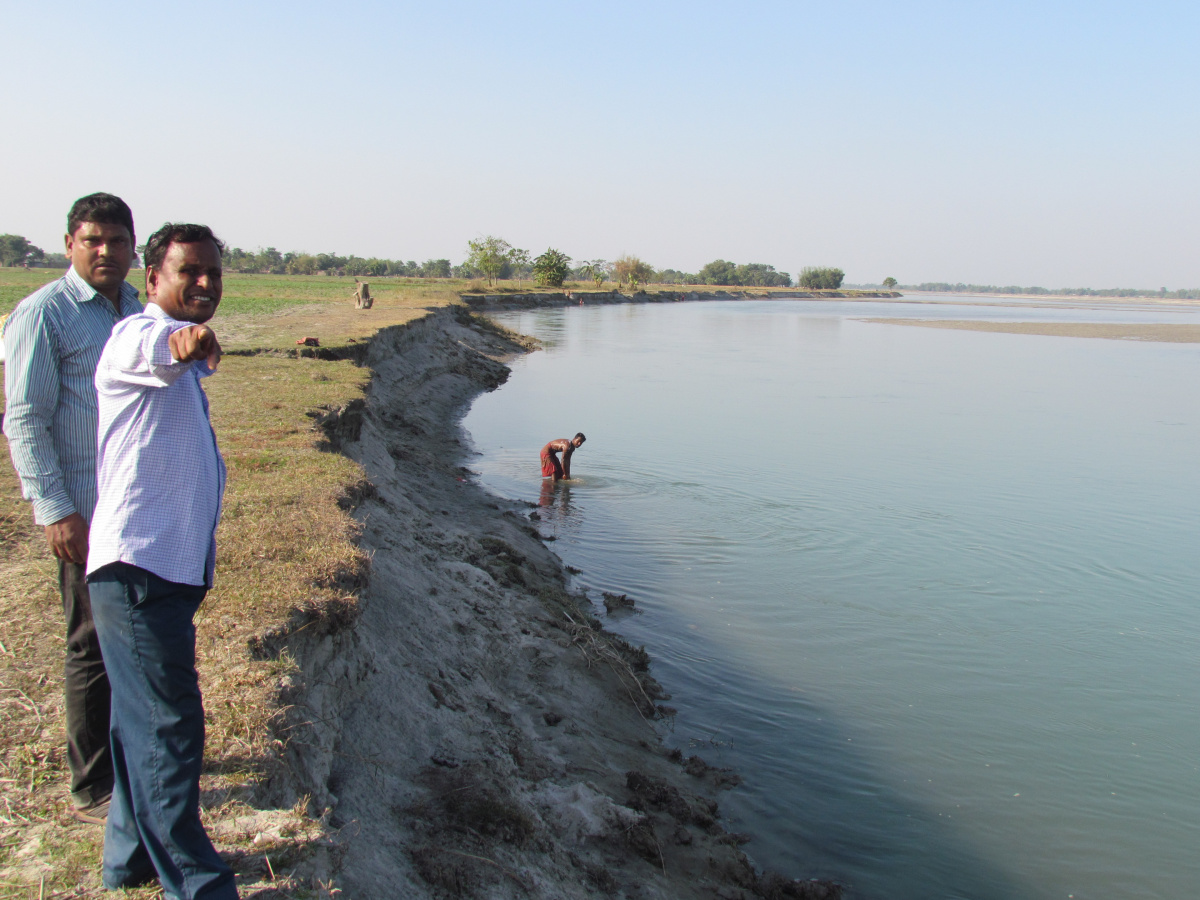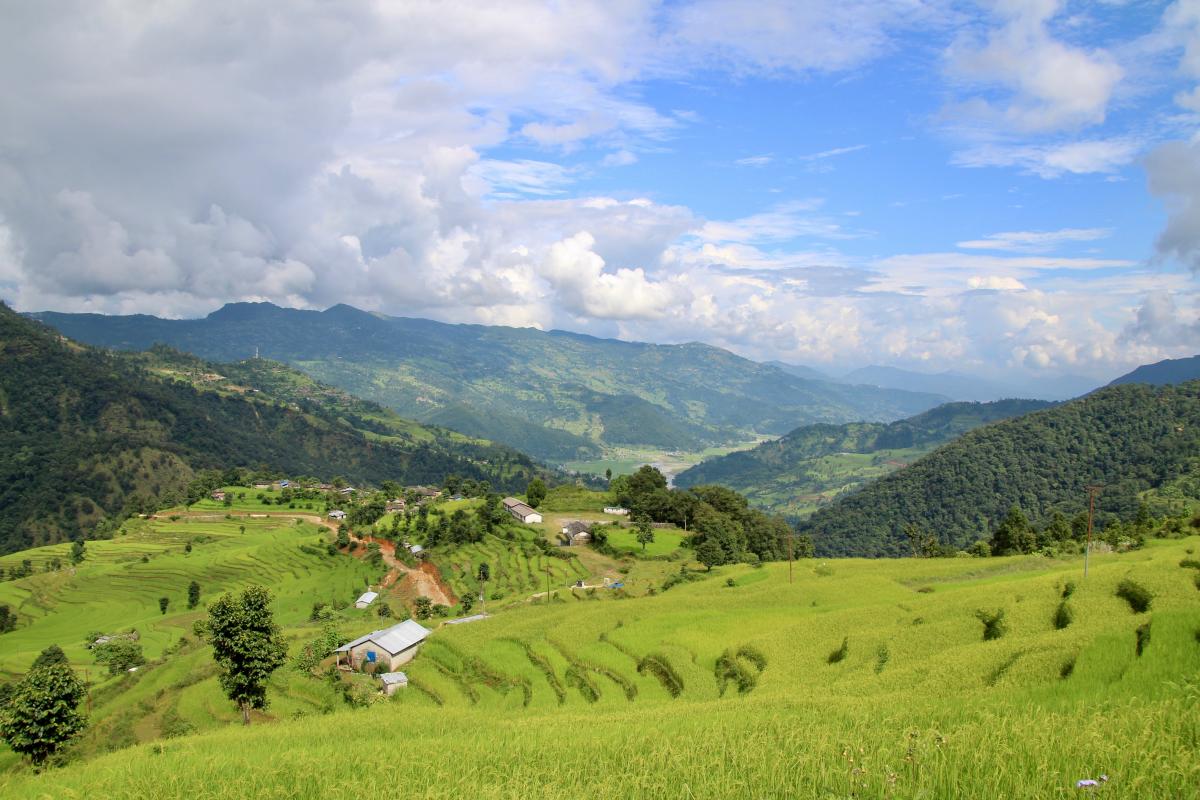Developing a Ramsar Site Management Plan for Nepal’s largest lake
IUCN, in collaboration with the Department of National Parks and Wildlife Conservation (DNPWC) Nepal, is working with stakeholders at Rara Lake Ramsar Site to develop a management plan for the lake’s conservation and sustainable use. Located at an altitude of 2,990 metres above sea level, Rara Lake is the largest in Nepal.
The project team has used the Ramsar Management Effectiveness Tracking Tool (R-METT) and the Rapid Assessment of Wetland Ecosystem Services (RAWES) to determine opportunities, gaps, and challenges at the site. Consultations had involved multiple stakeholders working and living around the lake, including local governments, community-based organisations, representatives from the National Park, and the Nepalese Army.
The results will provide a scientific basis for the conservation and effective management of Rara Lake. The lake was designated as a Wetland of International Importance under the Ramsar Convention in 2007 because it is a unique and rare natural wetland type at high altitude, hosts endemic fishes, and acts as an important wintering ground for migratory birds.
“It is important to use evaluation tools that are officially recognised by the Ramsar Convention, including R-METT and RAWES, to prepare the Rara Lake Ramsar Site Management Plan. The development of a readily implementable, high-quality management plan will strengthen the ecological integrity of Rara Lake while diversifying sustainable livelihood activities in the area," said Mr. Gopal Prakash Bhattarai, Director General of DNPWC.
Various management constraints were identified during the R-METT workshop, including a lack of a site management plan and unclear physical boundary for the Ramsar site, limited staff training, inadequate visitor facilities, and limited research on the site’s ecology. Strengths highlighted include an established legal status, tourism potential, local community participation, Ramsar site designation, and the presence of law enforcement. The Rara Lake Ramsar site is located inside Rara National Park. Nepal's protected area policy and legislation supports the Ramsar site conservation. These strengths and weaknesses will be considered in the development of the site management plan.
A technical committee was also formed to coordinate the management plan development process, including representatives from DNPWC, Program for Aquatic Natural Resources Improvement (PAANI), Conservation Development Foundation (CODEFUND), International Union for Conservation of Nature (IUCN) and Rara National Park (RNP).
Future plans for the project include integrating the results of the R-METT, RAWES, and community consultations into the development of a comprehensive site management plan, which promotes the wise use of wetlands and supports sustainable tourism and community livelihoods.
The project is funded by the United States Agency for International Development – Development Alternative Incorporated (USAID DAI) Paani Program, a water conservation initiative implemented in Nepal, focused on working with local and national counterparts to conserve freshwater biodiversity and implement sustainable water management practices.
